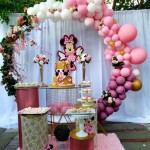DIY Minimalist Room Decor: Enhancing Space Through Simplicity
Minimalist room decor, characterized by its emphasis on functionality, clean lines, and the absence of clutter, has gained significant popularity as individuals seek to create serene and organized living spaces. This approach to interior design prioritizes essential items, neutral color palettes, and natural light, ultimately fostering a sense of calm and spaciousness. Implementing minimalist decor does not necessarily require extensive financial investment; rather, it often encourages resourcefulness and creativity through do-it-yourself (DIY) projects. By repurposing existing items, utilizing affordable materials, and adopting a "less is more" philosophy, individuals can transform their rooms into minimalist havens.
The principles of minimalism in interior design extend beyond mere aesthetics. It promotes a conscious lifestyle, encouraging individuals to curate their belongings carefully and to invest in durable, versatile pieces that serve a practical purpose. A minimalist space can be easier to maintain, reducing cleaning time and promoting a more relaxed environment. Furthermore, the absence of visual distractions can contribute to improved focus and productivity, making it an ideal design choice for home offices or study areas.
Key Point 1: Embracing Natural Elements and Textures
A fundamental aspect of minimalist room decor involves incorporating natural elements and textures to add depth and visual interest without compromising the overall simplicity. These elements can introduce warmth and organic appeal, preventing the space from feeling sterile or impersonal.
One effective DIY project is creating wall art from dried foliage. Gather various types of leaves, flowers, or small branches and press them between heavy books until completely dry. These pressed botanicals can then be arranged and framed in simple, minimalist frames. The natural textures and subtle variations in color will provide a delicate and visually engaging focal point. Alternatively, consider framing woven textiles or textured paper for a similar effect.
Another approach is to utilize natural materials in shelving and storage solutions. Salvaged wood, for example, can be sanded and stained with a clear or light-toned sealant to create rustic yet minimalist shelving units. These shelves can be used to display a few carefully selected books, plants, or decorative objects. Ensure that the shelving is securely mounted and that the items displayed are thoughtfully chosen to avoid cluttering the space.
Plants play a crucial role in softening the starkness of minimalist decor. Choose plants with simple, clean lines, such as snake plants, succulents, or ZZ plants. Repot these plants in minimalist ceramic or terracotta pots. Consider using macrame plant hangers made from natural fibers like jute or cotton to add texture and visual interest. Cluster plants together in small groups to create a small "indoor garden" effect.
Textural elements can also be incorporated through textiles. Opt for natural fabrics like linen, cotton, or wool for bedding, curtains, and throw pillows. Choose neutral colors and simple patterns, such as stripes or geometric designs. Knit or crochet simple cushions or throws to bring a handmade touch to the space. Layering different textures in similar tones can create a sense of depth and sophistication.
Key Point 2: Repurposing and Upcycling Existing Items
Minimalism encourages resourcefulness and sustainable practices. Repurposing and upcycling existing items is an excellent way to create unique and personalized decor while reducing waste and minimizing expenses. This approach aligns with the minimalist philosophy of making the most of what one already possesses.
Old glass jars and bottles can be transformed into stylish storage containers. Clean and remove any labels from the jars. Paint them with matte white or gray paint for a uniform look. Use them to store cotton balls, makeup brushes, or other small items in the bathroom or bedroom. Alternatively, use the jars as vases for single stems of flowers or greenery.
Ladders can be upcycled into unconventional shelving units or towel racks. An old wooden ladder can be sanded, painted, and leaned against a wall to create a rustic display shelf. Alternatively, attach hooks to the ladder rungs to hang towels in the bathroom or scarves in the bedroom. Ensure the ladder is stable and securely positioned before placing any items on it.
Old picture frames can be repurposed in various creative ways. Remove the glass and backing and paint the frames in a neutral color. Use them to create a gallery wall by hanging multiple frames in different sizes and shapes. Insert fabric scraps, pressed flowers, or abstract paper designs into the frames for a unique and personalized art display. Alternatively, use a large frame as a bulletin board by attaching a corkboard backing.
Old t-shirts or fabric scraps can be transformed into decorative throw pillows or cushion covers. Cut the fabric into squares or rectangles and sew them together to create a simple pillow cover. Stuff the cover with recycled materials, such as old clothing or fabric scraps. Use different colors and patterns of fabric to create a patchwork effect, or stick to a single color palette for a more minimalist look.
Cardboard boxes can be transformed into stylish storage solutions. Cover the boxes with contact paper in a neutral color or patterned design. Sturdy boxes can be used to store clothing, books, or household items. Label the boxes clearly to maintain organization and prevent clutter.
Key Point 3: Creating DIY Minimalist Wall Art
Wall art is an important element in any room, and minimalist wall art can be created easily and affordably through various DIY projects. The key is to focus on simple designs, neutral colors, and clean lines. This will help to enhance the minimalist aesthetic of the space without overwhelming it.
Abstract line art is a simple and elegant way to create minimalist wall decor. Use a graphite pencil or fine-tipped marker to draw simple lines and shapes on white paper. Experiment with different compositions and line weights. Frame the artwork in a simple black or white frame for a polished look. This type of art can be very expressive while remaining uncluttered.
Geometric shapes can be used to create striking and modern wall art. Use painter's tape to create geometric patterns on a canvas or piece of wood. Paint the sections with different shades of a neutral color, such as gray, beige, or white. Remove the tape once the paint is dry to reveal the geometric design. This type of art is particularly effective in minimalist spaces due to its clean lines and simple shapes.
Quote art can be both decorative and motivational. Choose a favorite quote or saying and write it in elegant calligraphy or a simple font on a piece of paper. Frame the quote in a minimalist frame and hang it on the wall. Consider using a quote that aligns with the minimalist philosophy, such as "Less is more" or "Simplicity is the ultimate sophistication."
String art is a fun and creative way to add texture and visual interest to a minimalist space. Hammer small nails into a piece of wood in the shape of a simple design, such as a heart, star, or geometric shape. Wrap string around the nails to create the string art design. Choose a neutral color for the string to maintain the minimalist aesthetic.
Woven wall hangings can add a touch of bohemian flair to a minimalist room. Use yarn, string, or other fibers to create a simple woven design on a loom or frame. Experiment with different textures and colors, but stick to a neutral color palette to maintain the minimalist aesthetic. Woven wall hangings can add warmth and visual interest to a space without overwhelming it.
When selecting or creating wall art, it's important to consider the size and placement of the artwork. Choose pieces that are appropriately sized for the wall and the room. Avoid overcrowding the walls with too much art. Instead, focus on a few carefully selected pieces that will enhance the overall aesthetic of the space.
In conclusion, creating minimalist room decor through DIY projects is a rewarding and cost-effective way to transform living spaces into calm and organized havens. By embracing natural elements, repurposing existing items, and crafting simple wall art, individuals can achieve a minimalist aesthetic that reflects their personal style and promotes a more peaceful and functional environment. Remember that the core of minimalism lies in intentionality and mindful curation, ensuring that every item serves a purpose and contributes to the overall harmony of the space.

21 Budget Friendly Ways To Turn Your Home Into A Minimalist Paradise

Cozy Minimalist Bedroom Decoration Ideas Bedroomideas Bedroomdecor Decor Home Design

15 Minimalist Bedroom Ideas That Will Inspire You To Redecorate Your Room Society19 Dorm Decor Design Aesthetic

Modern Diy Decor Ideas Your Home Needs

Minimalist Diys You Need To Make The Blush Home Blog

Cozy Loving Decor Modernofficedecoratingideassmallspaces Interiorhomedecoration Minimalist Home Bedroom

Easy Minimalist Diy Wall Art In Earthy Neutrals Home Decor Your Family

Top 6 Simple Diy Minimalist Living Room Ideas On A Budget Ourgoodbrands
.jpg?strip=all)
5 Minimalist Design Ideas To Try At Home Dream Green Diy

Minimal Decor Archives Diy Home Your Family
Related Posts







